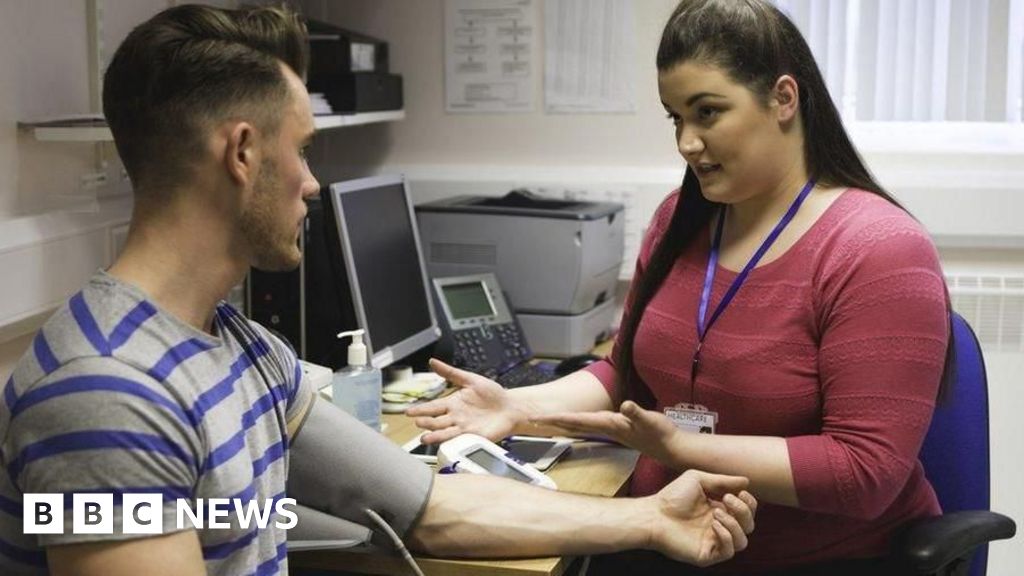The best mobile microphones for 2024
When it comes to recording on the go, having the best phone mic can make a huge difference in your audio quality, whether you’re starting a podcast, streaming live, or just capturing voice notes and interviews. While built-in phone microphones can do the job for casual use, mobile microphones take things up a notch by offering a clearer, more professional sound that stands out.These compact mics are perfect for content creators who need reliable audio without lugging around big equipment. From bloggers and YouTubers to musicians and podcasters, a good mobile microphone ensures your voice is always heard crisp and clean, no matter where you are. Many even come with handy charging cases to keep your gear powered up and ready to go, making them great for travel and outdoor shoots.If you're looking to improve your audio game, we’ve rounded up the best mobile microphones that will elevate your recordings, whether you're chatting on a live stream or recording your next episode. We’ve included everything from a complete microphone system to wireless lavalier mics and everything in between. Lavalier mics James Trew / Engadget The obvious benefit of a lapel microphone is size. Their small profile makes them perfect for presenting to the camera with the flexibility to move around while maintaining consistent audio quality. If you’re a budding TikTok or vlogger it’s definitely worth having one of these mini microphones in your bag. And if you don’t want to be tied down to cables, there are plenty of great wireless lavalier microphone options with convenient adapters. The main trade-off, however, is that they’re only good for recording the person they’re attached to. If you have two people talking and only one is wearing the mic, you’ll only get good audio for one half of the conversation, so for multi-person recordings you’ll need a mic for each guest and a way to record them at the same time, so costs can go up quickly. Fortunately, lapel mics have become a very competitive market with good, viable options costing as little as $14.95. For an absolute bargain with a long cord and some connectivity accessories, the Boya BY M1 is hard to argue with. But, while these budget choices are great value, if you want something that should either last longer, is more versatile or just sounds better it’s worth paying a little bit more. A word on wireless mic Recently there has been an explosion in cell phone microphone systems, but there's one wireless mic we really like. DJI's Mic 2 system provides some important upgrades from its predecessor. Notably, it can connect directly to your smartphone via Bluetooth, and it sports improved AI noise reduction and a bigger touchscreen. Adapters So we’ve already touched on this with the AI Micro, which is an adapter of sorts. One of the first things you might bump up against when dealing with mobile audio accessories is TRRS vs TRS connectors. Simply put, 3.5mm TRS is what you might know as the age-old classic headphone jack while TRRS became common for its support for headsets and inline mics. You can easily tell them apart as TRS connectors have two black bands on them while a TRRS has three. For you, the budding creator, it can be a bit of an annoyance as many 3.5mm lavaliers are going to be TRS and won’t work when plugged into your phone’s headphone adapter. Sometimes your lavalier might include what you need in the box, but otherwise, you’ll want to pick up a TRS to TRRS adapter like this. Of course, some smartphone-specific mics have TRRS connectors already – for those, you’ll want a cable that goes the other way should you want to use it with other devices like a DSLR. Shotgun mics James Trew / Engadget You may be more familiar with shotgun microphones when it comes to video recording. It’s the style of microphone most often found atop a DSLR or mirrorless camera, but they make great companions for other portable devices too, your cell phone included. The benefit of a shotgun is that they tend to be highly directional, which makes them perfect for podcasts, recording instruments, foley sounds and much, much more. For us mobile recordists, another benefit is that they tend to be light and portable, perfect for slipping into a backpack or even a laptop bag. Even better, there are some great mobile-specific options. Desktop and USB mics go mobile James Trew / Engadget Mobile-specific mics are great, but there’s nothing stopping you from using your cell phone microphone or another you might already have (if it’s somewhat portable). You’ll definitely need to do a little dance with some adapters, but that’s half the fun. Below are a couple of recommendations for “regular” microphones that pair well with a phone and then the cables and adapters that you’ll need to get setup. There are even some wireless systems that make it easy to record on the go. A word on cables James Trew / Engadget Connecting

When it comes to recording on the go, having the best phone mic can make a huge difference in your audio quality, whether you’re starting a podcast, streaming live, or just capturing voice notes and interviews. While built-in phone microphones can do the job for casual use, mobile microphones take things up a notch by offering a clearer, more professional sound that stands out.
These compact mics are perfect for content creators who need reliable audio without lugging around big equipment. From bloggers and YouTubers to musicians and podcasters, a good mobile microphone ensures your voice is always heard crisp and clean, no matter where you are. Many even come with handy charging cases to keep your gear powered up and ready to go, making them great for travel and outdoor shoots.
If you're looking to improve your audio game, we’ve rounded up the best mobile microphones that will elevate your recordings, whether you're chatting on a live stream or recording your next episode. We’ve included everything from a complete microphone system to wireless lavalier mics and everything in between.
Lavalier mics
The obvious benefit of a lapel microphone is size. Their small profile makes them perfect for presenting to the camera with the flexibility to move around while maintaining consistent audio quality. If you’re a budding TikTok or vlogger it’s definitely worth having one of these mini microphones in your bag. And if you don’t want to be tied down to cables, there are plenty of great wireless lavalier microphone options with convenient adapters.
The main trade-off, however, is that they’re only good for recording the person they’re attached to. If you have two people talking and only one is wearing the mic, you’ll only get good audio for one half of the conversation, so for multi-person recordings you’ll need a mic for each guest and a way to record them at the same time, so costs can go up quickly.
Fortunately, lapel mics have become a very competitive market with good, viable options costing as little as $14.95. For an absolute bargain with a long cord and some connectivity accessories, the Boya BY M1 is hard to argue with. But, while these budget choices are great value, if you want something that should either last longer, is more versatile or just sounds better it’s worth paying a little bit more.
A word on wireless mic
Recently there has been an explosion in cell phone microphone systems, but there's one wireless mic we really like. DJI's Mic 2 system provides some important upgrades from its predecessor. Notably, it can connect directly to your smartphone via Bluetooth, and it sports improved AI noise reduction and a bigger touchscreen.
Adapters
So we’ve already touched on this with the AI Micro, which is an adapter of sorts. One of the first things you might bump up against when dealing with mobile audio accessories is TRRS vs TRS connectors. Simply put, 3.5mm TRS is what you might know as the age-old classic headphone jack while TRRS became common for its support for headsets and inline mics. You can easily tell them apart as TRS connectors have two black bands on them while a TRRS has three.
For you, the budding creator, it can be a bit of an annoyance as many 3.5mm lavaliers are going to be TRS and won’t work when plugged into your phone’s headphone adapter. Sometimes your lavalier might include what you need in the box, but otherwise, you’ll want to pick up a TRS to TRRS adapter like this. Of course, some smartphone-specific mics have TRRS connectors already – for those, you’ll want a cable that goes the other way should you want to use it with other devices like a DSLR.
Shotgun mics
You may be more familiar with shotgun microphones when it comes to video recording. It’s the style of microphone most often found atop a DSLR or mirrorless camera, but they make great companions for other portable devices too, your cell phone included.
The benefit of a shotgun is that they tend to be highly directional, which makes them perfect for podcasts, recording instruments, foley sounds and much, much more. For us mobile recordists, another benefit is that they tend to be light and portable, perfect for slipping into a backpack or even a laptop bag. Even better, there are some great mobile-specific options.
Desktop and USB mics go mobile
Mobile-specific mics are great, but there’s nothing stopping you from using your cell phone microphone or another you might already have (if it’s somewhat portable). You’ll definitely need to do a little dance with some adapters, but that’s half the fun. Below are a couple of recommendations for “regular” microphones that pair well with a phone and then the cables and adapters that you’ll need to get setup. There are even some wireless systems that make it easy to record on the go.
A word on cables
Connecting USB microphones directly to phones is rarely as simple as just one cable, although that’s starting to become more common. In general, Android makes this simpler, but also, thanks to the wide range of manufacturers and software versions you can’t always guarantee things will work smoothly.
The iPhone is a whole other situation. USB microphones have a good chance of working via the USB camera kit we mentioned earlier, but that’s still inelegant sometimes. Frustratingly, some USB-C to Lightning cables will play nice with microphones, but sadly most will not – including Apple’s own. One confirmed option is this cable from Fiio or this generic alternative. These are inexpensive enough that it’s worth having a couple around if you work with audio a lot (they of course can also be used to charge your phone as a bonus).
Other mobile microphones to consider
This article originally appeared on Engadget at https://www.engadget.com/best-mobile-microphones-for-recording-with-a-phone-154536629.html?src=rss
What's Your Reaction?





























































